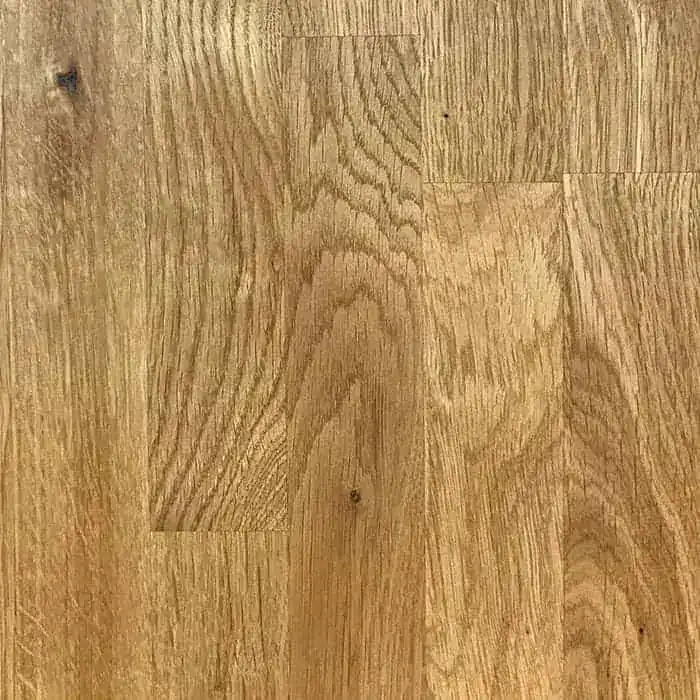Looking for a warm‑toned hardwood with classic character and everyday durability for your kitchen? This guide answers the question many buyers ask: what is oak wood? It also shows how it compares with other popular species, so you can choose with confidence.
What Is Oak Wood?
What Is Oak Wood? Quick Definition & Origin
1. What Is Oak Wood? Botanical Profile
Oak wood comes from trees in the Quercus genus. In Europe, European oak (Quercus robur and Q. petraea) is most common; in North America, white oak (Q. alba) and red oak (Q. rubra) dominate. When people ask what is oak wood?, they usually mean these durable timbers prized for their strength, attractive grain and long service life in homes.
2. European vs American Oak Wood
If you are wondering what the difference is between European oak wood and American oak wood, in practical terms, European oak tends to have a slightly richer golden colour with prominent medullary rays (those pale flecks that shimmer on quarter‑sawn faces). American white oak is a little lighter and more uniform; American red oak shows a pinkish cast and open pores. All machine well and finish beautifully.

What Is Oak Wood? Quick Definition & Origin
1. What Is Oak Wood? Botanical Profile
Oak wood comes from trees in the Quercus genus. In Europe, European oak (Quercus robur and Q. petraea) is most common; in North America, white oak (Q. alba) and red oak (Q. rubra) dominate. When people ask what is oak wood?, they usually mean these durable timbers prized for their strength, attractive grain and long service life in homes.
2. European vs American Oak Wood
If you are wondering what the difference is between European oak wood and American oak wood, in practical terms, European oak tends to have a slightly richer golden colour with prominent medullary rays (those pale flecks that shimmer on quarter‑sawn faces). American white oak is a little lighter and more uniform; American red oak shows a pinkish cast and open pores. All machine well and finish beautifully.


History of Oak Wood
1. Ancient and Medieval Uses of Oak Wood
From shipbuilding and barrels to beams and doors, oak has underpinned European craft for centuries. For craftsmen, considering different types of wood, oak wood properties include strength, longevity and protection. Medieval framed buildings, castle gates and church pews often relied on oak because it resisted wear and held fastenings superbly.
2. 20th Century to Now
In the modern era, toak wood extends from traditional joinery to contemporary design. Oak moved from barns and beams into minimalist kitchens, engineered flooring and fine furniture. Its blend of warmth and precision suits both heritage and modern schemes, and sustainability programs now ensure responsibly sourced supply.
History of Oak Wood
1. Ancient and Medieval Uses of Oak Wood
From shipbuilding and barrels to beams and doors, oak has underpinned European craft for centuries. For craftsmen, considering different types of wood, oak wood properties include strength, longevity and protection. Medieval framed buildings, castle gates and church pews often relied on oak because it resisted wear and held fastenings superbly.
2. 20th Century to Now
In the modern era, toak wood extends from traditional joinery to contemporary design. Oak moved from barns and beams into minimalist kitchens, engineered flooring and fine furniture. Its blend of warmth and precision suits both heritage and modern schemes, and sustainability programs now ensure responsibly sourced supply.
Characteristics & Performance of Oak Wood
1. Grain, Colour & Grade of Oak Wood
When people ask what is oak wood, appearance is often the first thing they consider. Oak ranges from pale straw through to rich golden brown, with a grain that is usually straight but sometimes shows cathedral arches. Quarter-sawn oak reveals its distinctive ray fleck. Select grades give a smooth, uniform look, while character grades of oak wood highlight knots, colour shifts and natural figure.
2. Strength, Hardness & Stability
In terms of performance, oak wood is known for its toughness and reliability. European and American white oak typically score 1,200–1,360 lbf on the Janka scale, making them strong enough for everyday use in busy homes. With the right installation and care, oak remains stable, although like any hardwood, it expands and contracts with seasonal humidity changes.
3. Workability & Finishing
For joinery and furniture, oak wood machines cleanly, holds screws well and responds beautifully to oils, stains and finishes. Its high tannin content means it reacts with iron, so stainless steel or coated fixings are recommended. Clear oil highlights the grain for a natural look, while fuming or darker stains create richer tones. Oak is predictable and versatile in the workshop, which is why it has remained a staple for centuries.
Pros and Cons of Oak Wood
Advantages of Oak Wood
-
Timeless, warm colour that suits classic and modern designs
-
Tough, long‑wearing surface for busy family kitchens
-
Distinctive ray fleck and grain that add natural texture
-
Excellent for joinery; holds screws and glue lines strongly
-
Finishes superbly with oil or hardwax; stains evenly from pale to dark
-
Wide availability of oak wood in consistent quality
Disadvantages of Oak Wood
-
Tannins can mark if iron or standing water is left on the surface
-
Movement is moderate, so fitting and maintenance matter
-
Open pores can trap fine dust without thorough finishing
-
Red oak (North America) is more open‑pored, so less suited to wet zones than white oak

Pros and Cons of Oak Wood
Advantages of Oak Wood
-
Timeless, warm colour that suits classic and modern designs
-
Tough, long‑wearing surface for busy family kitchens
-
Distinctive ray fleck and grain that add natural texture
-
Excellent for joinery; holds screws and glue lines strongly
-
Finishes superbly with oil or hardwax; stains evenly from pale to dark
-
Wide availability of oak wood in consistent quality
Disadvantages of Oak Wood
-
Tannins can mark if iron or standing water is left on the surface
-
Movement is moderate, so fitting and maintenance matter
-
Open pores can trap fine dust without thorough finishing
-
Red oak (North America) is more open‑pored, so less suited to wet zones than white oak


Best Uses of Oak Wood in the House
Oak Wood for Kitchen Worktops
For many homeowners, oak wood in a kitchen means warmth, character and longevity. The grain pairs with painted shaker cabinets as easily as with sleek handleless doors, and the colour mellows attractively with time. If you are comparing options for a project, explore our range of oak worktops for dimensions, grades and finishing guidance.
Furniture, Flooring & Joinery
Designers may use oak wood for home projects, such as dining tables, shelving, doors and stair parts. It is strong enough for slim profiles, takes fine details crisply and, on floors, offers a forgiving surface that hides day‑to‑day scuffs better than very pale, flat‑grained species.
Best Uses of Oak Wood in the House
Oak Wood for Kitchen Worktops
For many homeowners, oak wood in a kitchen means warmth, character and longevity. The grain pairs with painted shaker cabinets as easily as with sleek handleless doors, and the colour mellows attractively with time. If you are comparing options for a project, explore our range of oak worktops for dimensions, grades and finishing guidance.
Furniture, Flooring & Joinery
Designers may use oak wood for home projects, such as dining tables, shelving, doors and stair parts. It is strong enough for slim profiles, takes fine details crisply and, on floors, offers a forgiving surface that hides day‑to‑day scuffs better than very pale, flat‑grained species.

Oak Wood Care & FAQs
Is Oak Durable for Busy Kitchens?
Yes. With correct installation, stable indoor humidity and periodic oiling, oak wood stands up to daily chopping, sliding pans and family life. Use trivets for hot pans and chopping boards for knives to keep the surface pristine.
How Do You Maintain an Oak Worktop?
Oil generously before first use, then re-oil more often during the first three months while the pores saturate. After that, top up when water stops beading or the surface looks dry. Wipe spills promptly, avoid standing water and refresh with a light de-nib and oil when needed.
Is Oak Sustainable and Available?
Yes. European and American forestry programmes supply oak wood from responsibly managed forests with FSC or PEFC certification. Choosing certified stock from reputable suppliers ensures the timber is legally and sustainably sourced.
Does Oak Darken Over Time?
Like most hardwoods, oak gently deepens in colour as it oxidises and encounters sunlight. Freshly oiled oak wood will mellow from straw to golden honey, and regular care enhances this natural patina.
How Does Oak Compare to Ash for Worktops?
Oak and ash wood are close in hardness; oak is warmer and shows ray fleck, while ash is paler with bold cathedrals. Many people choose oak worktops for timeless warmth and ash for a brighter, Scandi-inspired look.
Why wait, order your Solid wood worktop today!
We know wood, and because of this, we are able to offer you an expansive collection of wood worktops and services, to suit any and all home projects.


